When I started building my first capsule wardrobe, I had no idea of my colour palette or how to pick the right colours for me and my lifestyle. In the beginning, I tried copying what other people were doing, but that didn’t get me far because most people I was inspired by had a very neutral and monotone colour selection. But even when I copied more colourful capsules, they were never the right fit.
Then I tried a different approach that many people recommend, and I sat down with a piece of paper and started designing my dream wardrobe colour palette from scratch. This sounded great in theory, but unfortunately, I discovered that it’s not the best approach because often, colour palettes that look good on paper don’t translate to our life very well. I’ve seen this time and time again, of people choosing really stunning colour combinations because they love it on paper, but they don’t enjoy all of the colours when it comes to their wardrobe. We all like certain colours on walls, decor, hangers and others, but not necessarily on our body and in our wardrobe, so we have to be careful not to get carried away and pick colours that sound good in theory only.
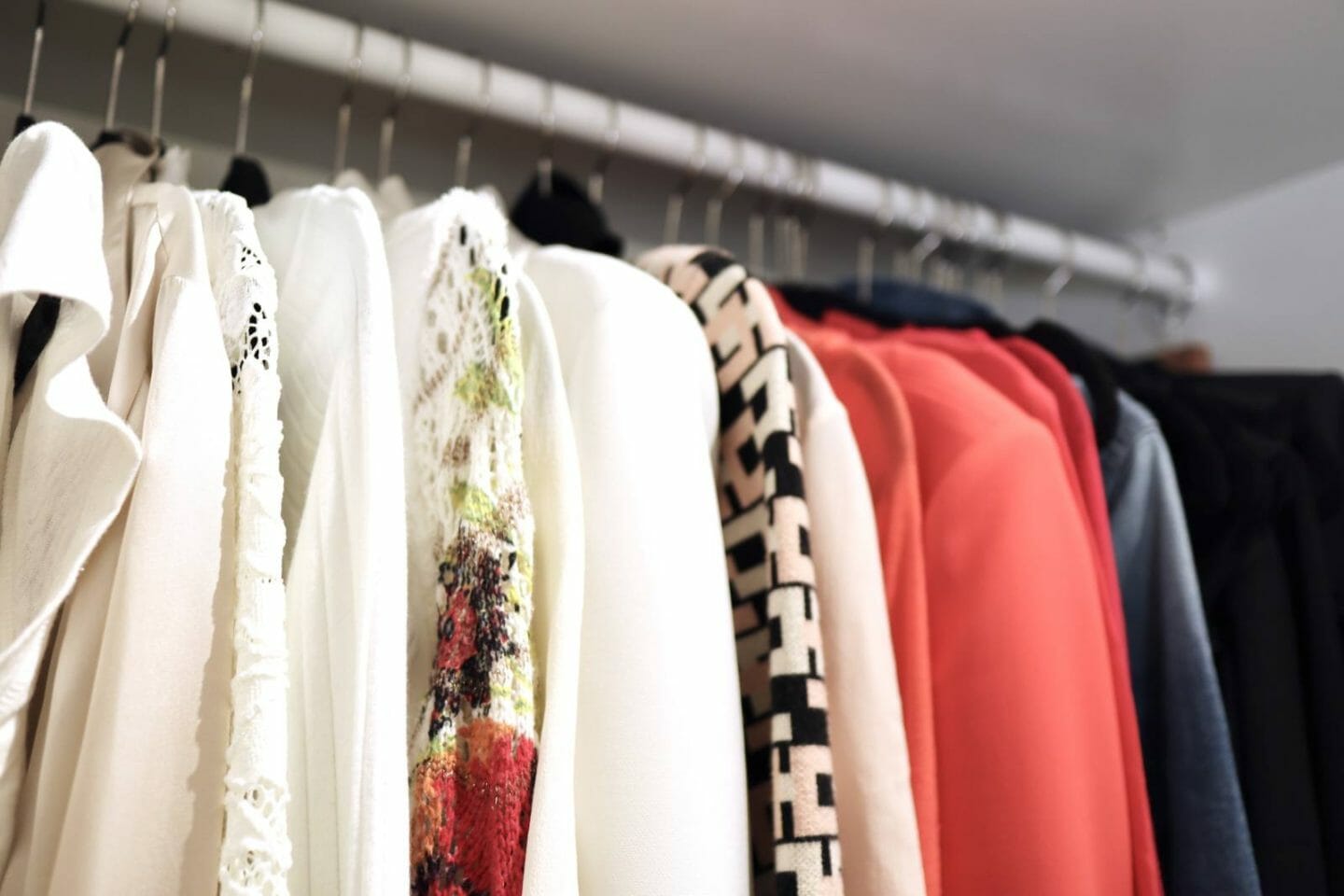
That’s why my approach focuses on the closet you already have, to make sure the palette is perfect for real life, not a fantasy. So if you’re a capsule wardrobe beginner or even if you’ve been using capsules for a while, but you’re still not entirely clear about what your colours are, this is for you.
WHY DO YOU NEED A COLOUR PALETTE?
Yes, if you’re here, chances are I don’t need to convince you that colour palettes are a great idea. But I still want to quickly share the two biggest reasons why colour palettes are essential for building and maintaining a capsule wardrobe.
The most important benefit is that when you have a colour palette that works for you, shopping becomes much easier and better. Automatically, all patterns and colours not on your list become something you’re not buying anymore. This way, you save not just a lot of time but also a lot of money because impulse shopping becomes much, much harder once you have a good game plan.
Also, if you ever bought an item in a colour or a print you haven’t owned before, and all of a sudden, you felt like you need to add a few more items in the same colour so you can match it better? Remember that feeling? One item suddenly invokes loads more buying, and that happened to me all the time. But with a sound colour palette, we avoid all of that.
The second big benefit is that colour palettes help us improve our style. Instead of merely adding and removing items from our wardrobe, we start thinking about how cohesive our closet really is. We identify gaps or duplicates, and we get a better representation of which colours we like in bottoms, tops, accessories, outerwear etc. This makes dressing much easier, and it gives us mental space to play around with styling.
So knowing your colour palette is absolutely essential for a great style and closet. And now let me share all the steps 😉
STEP 1 – FIGURE OUT HOW MANY SEASONS YOU WANT TO HAVE
First, you have to know how often you want to rotate your capsule wardrobe, so you can know how many colour palettes you need to figure out.
If you want to do a seasonal switchover every 3 months, then you need four colour palettes, but if you want to change your closet every 6 months, then you need only two.
STEP 2 – PICK YOUR SEASONAL FAVOURITES
Now that you know how many palettes you need, you can pick one of the seasons you want to have in your wardrobe, and for this season only, you go through your entire wardrobe, picking out the seasonal favourites.
For example: if you picked a summer capsule wardrobe, that means you go through all of your clothes, shoes, bags, outerwear and accessories, taking out your absolute favourites, or what I would call, absolute 10’s, and you put them somewhere away from your closet (on the sofa, or the bed).
Now if this seems a bit too much, you can also set a limit of 40 seasonal favourites: 25-30 pieces of clothing items, and 10-15 pieces of shoes, bags and accessories.

STEP 3 – SORT YOUR FAVOURITE COLOURS
Now that you have favourites in one spot, we can go analyse them and sort the colours into two categories: base and accent colours.
Base colours are something we wear all the time, they’re a workhorse of our wardrobe, and we just can’t seem to get tired of wearing them. They can be a neutral colour or a proper colour, it doesn’t matter.
Our pants, jeans, skirts, shorts, shoes and jackets are often items that represent our base colours very well, so if you have trouble narrowing down which colours are your basics, look at your bottoms, jackets and shoes for more insight.
Here I want to mention that it doesn’t matter how many colours you choose. We don’t want to restrict or force ourselves to have a specific number of colours, but we want to listen to ourselves and our closets. Obviously having loads of base colours, wouldn’t make sense, but having anywhere between 1-5 is absolutely fine.
And now for accent colours: these are often the most colourful in our wardrobe, but that is not necessarily the rule. For someone who loves wearing oranges and reds as base colours, an accent colour could be something like white or black. Usually, accent colours contrast our base colours; they’re colours that stand out against our basics.
Frequently, we’ll find most of these colours in our tops, dresses, handbags, scarves, accessories, and even shoes if we like to change them often, so look at these categories as a guide if you need some extra help.
The last thing to add is our favourite patterns that we love and frequently wear. You should treat them as colours, and put them in either base or accent patterns, depending on how many categories you see them in.
You can go as specific or as broad as you like; instead of separately naming leopard or zebra print, you can say animal prints. Or instead of saying tartan, gingham and check separately, you can say checked patterns or anything like that. Choose the names that represent your closet and your current colour palette well, and then we’ll build from there.
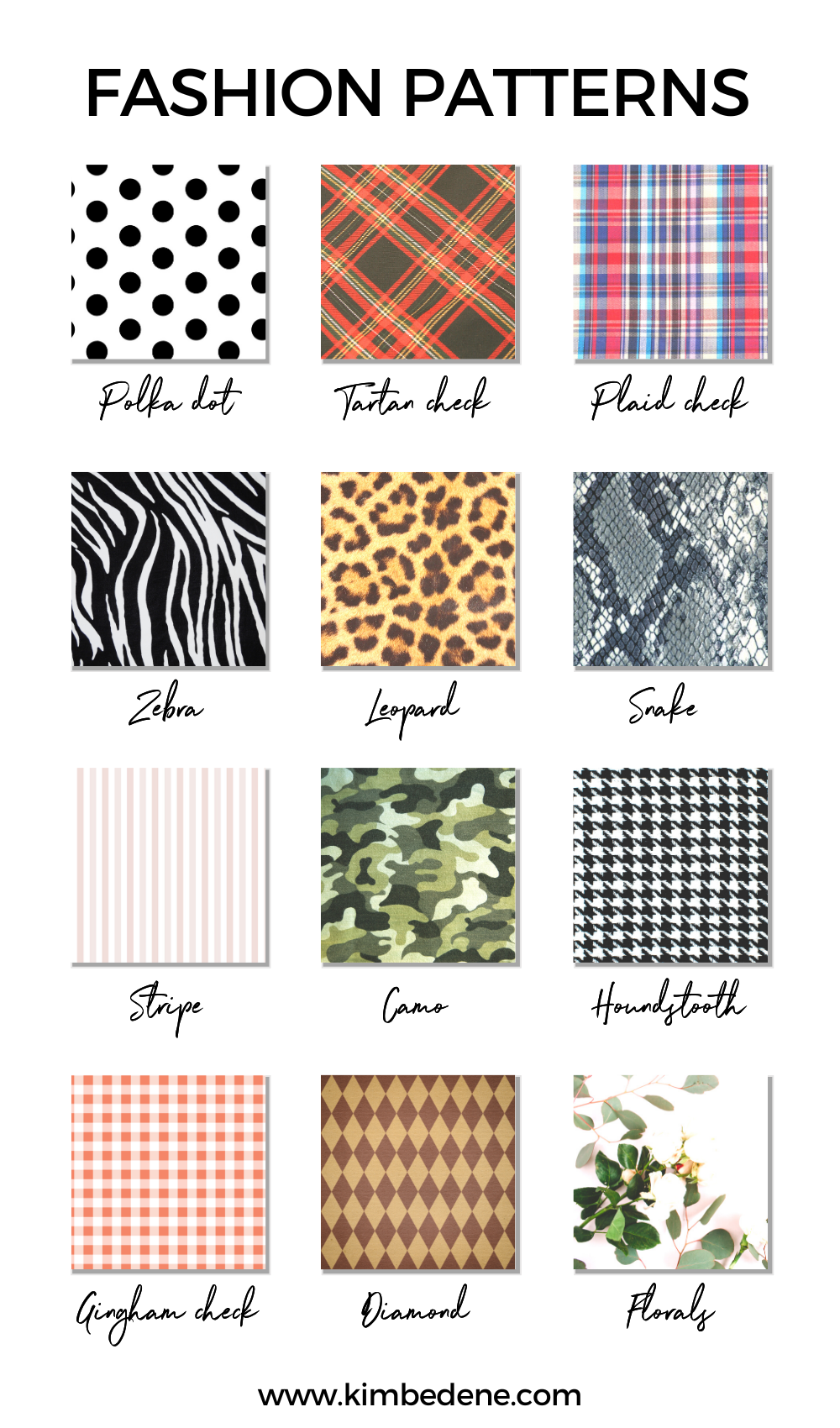
STEP 4 – NOTE DOWN YOUR ACCENT CATEGORIES
Now this step is optional, but I personally found it very useful, so if you have the time also write down which categories in your closet are the “accent” ones.
By doing this I realised I only like to have accent colours in certain categories (tops, dresses, bags and scarves), and this helps me tremendously when shopping because I can avoid buying accent colours in categories I would never reach for (bottoms, shoes and belts).
STEP 5 – ANALYSE THE UNDERTONES AND SATURATION
Once you wrote down the colour palette of your favourite seasonal items, now we can go a bit deeper, and we can analyse the colour undertones and saturation.
You want to see if you prefer colours with a cooler, neutral or warmer undertone, as well as if you prefer very saturated bright shades, or something a bit more muted like pastels or jewel tones.
This will make your colour palette so much better and shopping so much easier because you will know exactly which shades and undertones are your absolute faves, and this way you can avoid buying colours you would never ever wear.
Now if you never heard about undertones and contrast before, then it’s worth watching the video below where I explain this in more detail:
STEP 6 – REPEAT FOR EVERY SEASON
I would advise doing this for every season because we all navigate towards different colours and patterns in different seasons. I, for example, love plum in winter, but I would never wear it in the summer. And with navy is the opposite; I love it in the summer, but I don’t wear it in winter.
So if you change up your closet every three months, six months, or have only one wardrobe for the entire year, do this process for each capsule wardrobe you want to have in your closet.
And to give you a better representation of how colour palettes work in real life, here are my four colour combinations and patterns that work for me years in and out. Maybe not the most exciting on a piece of paper, but truly amazing for everyday life.

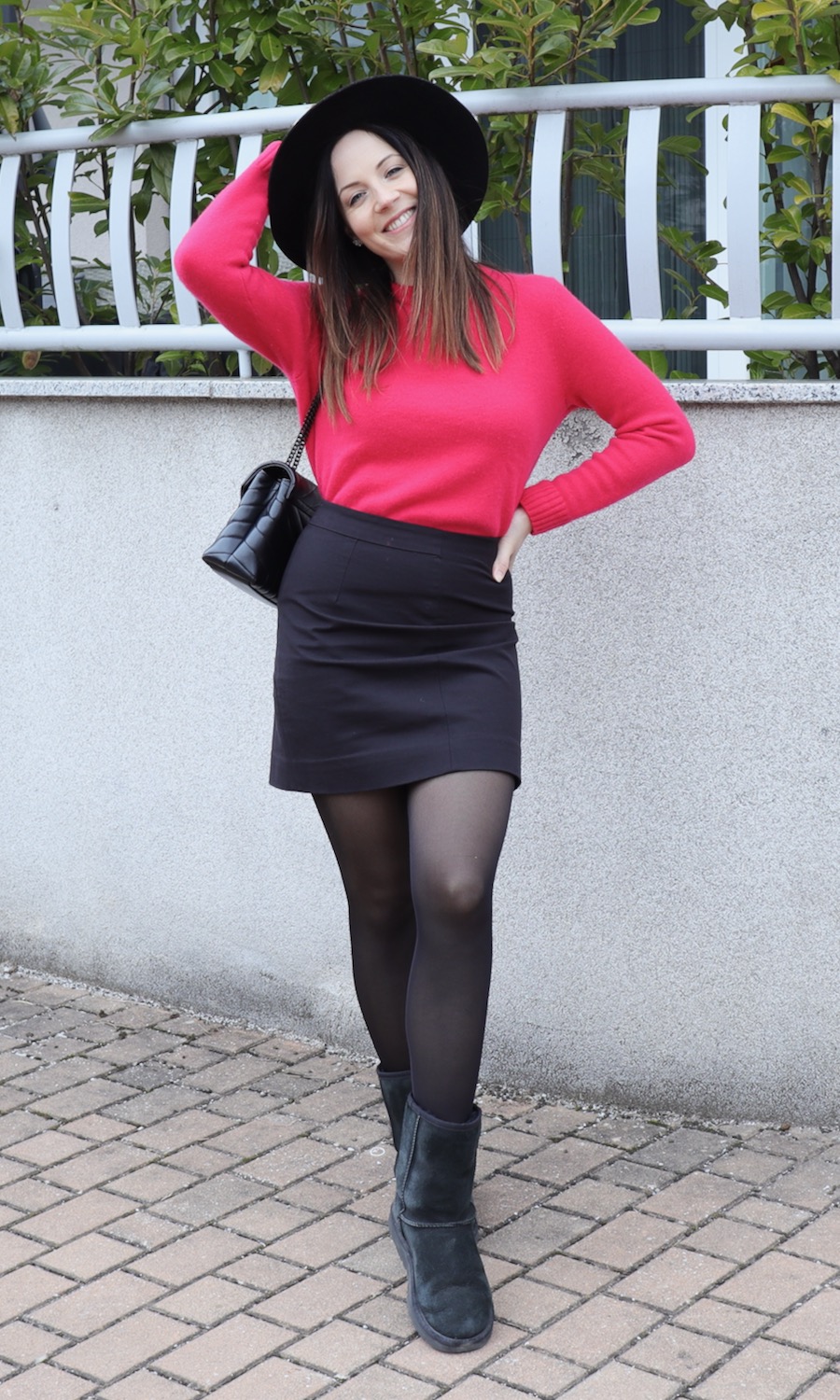
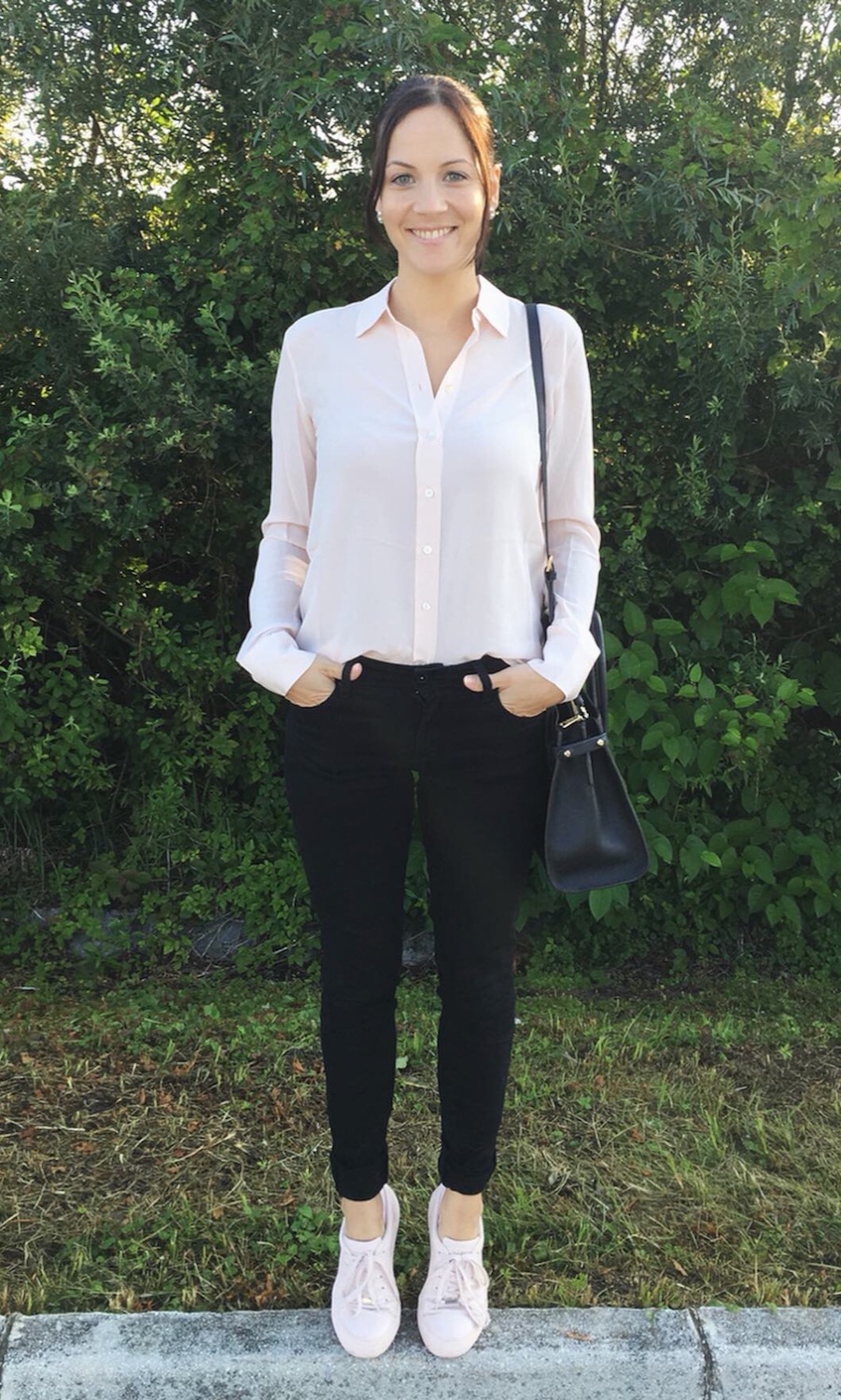
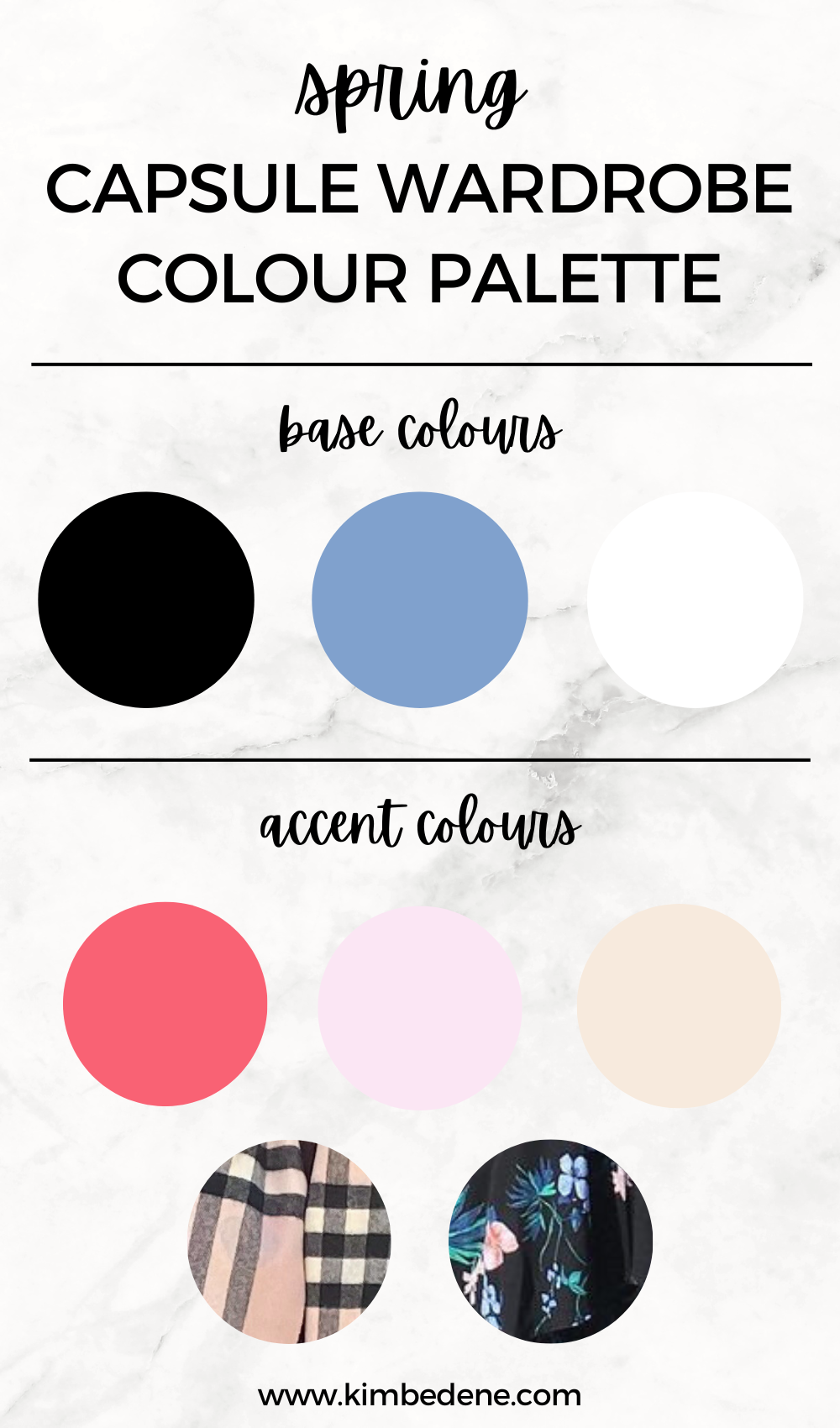

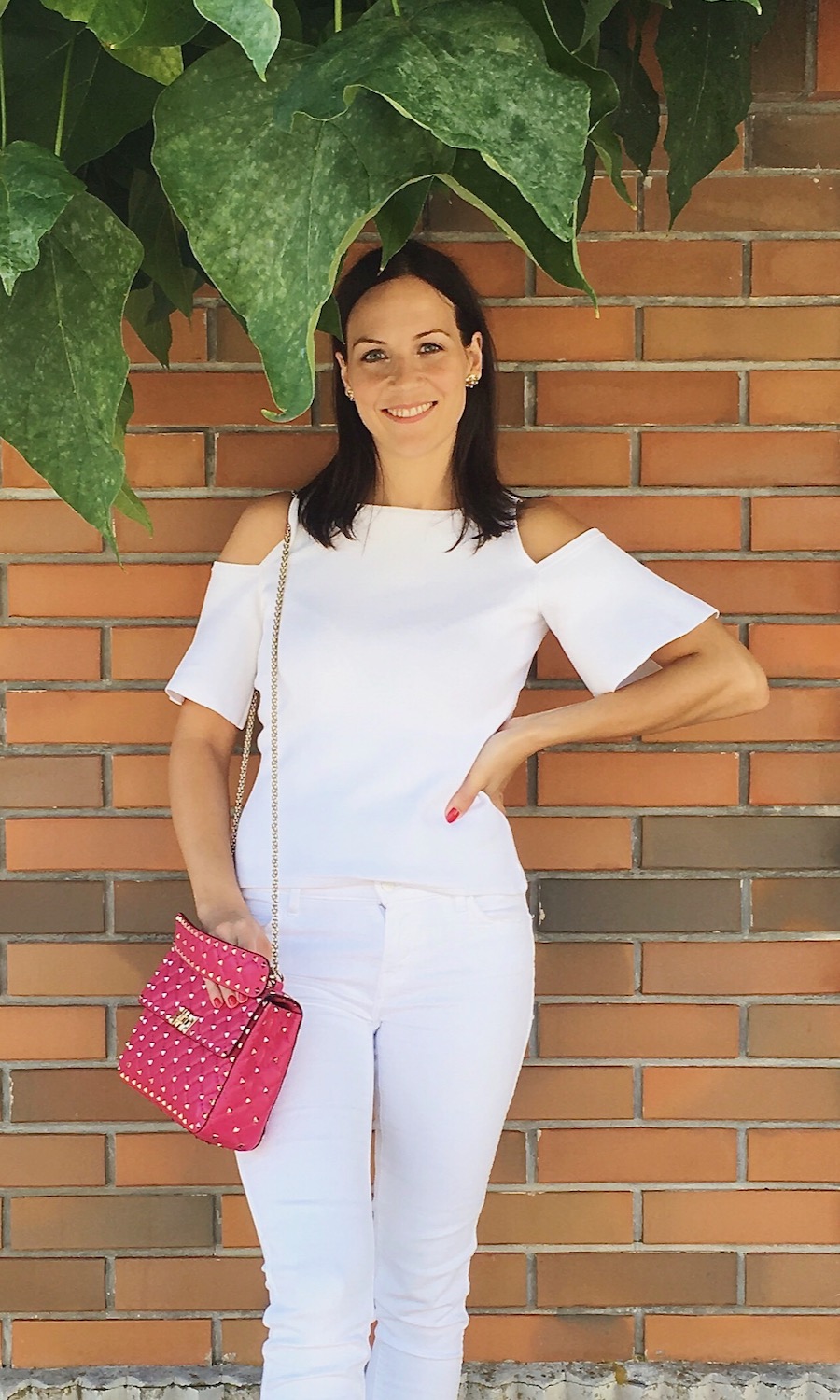


STEP 7 – PERFECT IT
This is another optional step I would use only if you’re unhappy with the colour palettes that you’ve written down, if you love them, then feel free to skip this altogether.
Once you have your colour palette and all of the information in front of you, you can do a few different things based on how you feel about your final result. Keep in mind that whenever I’m talking about adding, removing or replacing a colour group, I always want you to check in with yourself, so you never remove things that you enjoy or add items that you don’t.
I. IF YOU FEEL OVERWHELMED WITH ALL THE COLOURS
Suppose your colour selection makes you feel overwhelmed. In that case, the first thing to consider (if you haven’t done it already) is to break your closet into 3-month (spring, summer, fall, winter) or 6-month (spring/summer, fall/winter) capsule wardrobes. This will automatically simplify and improve your colour palette.
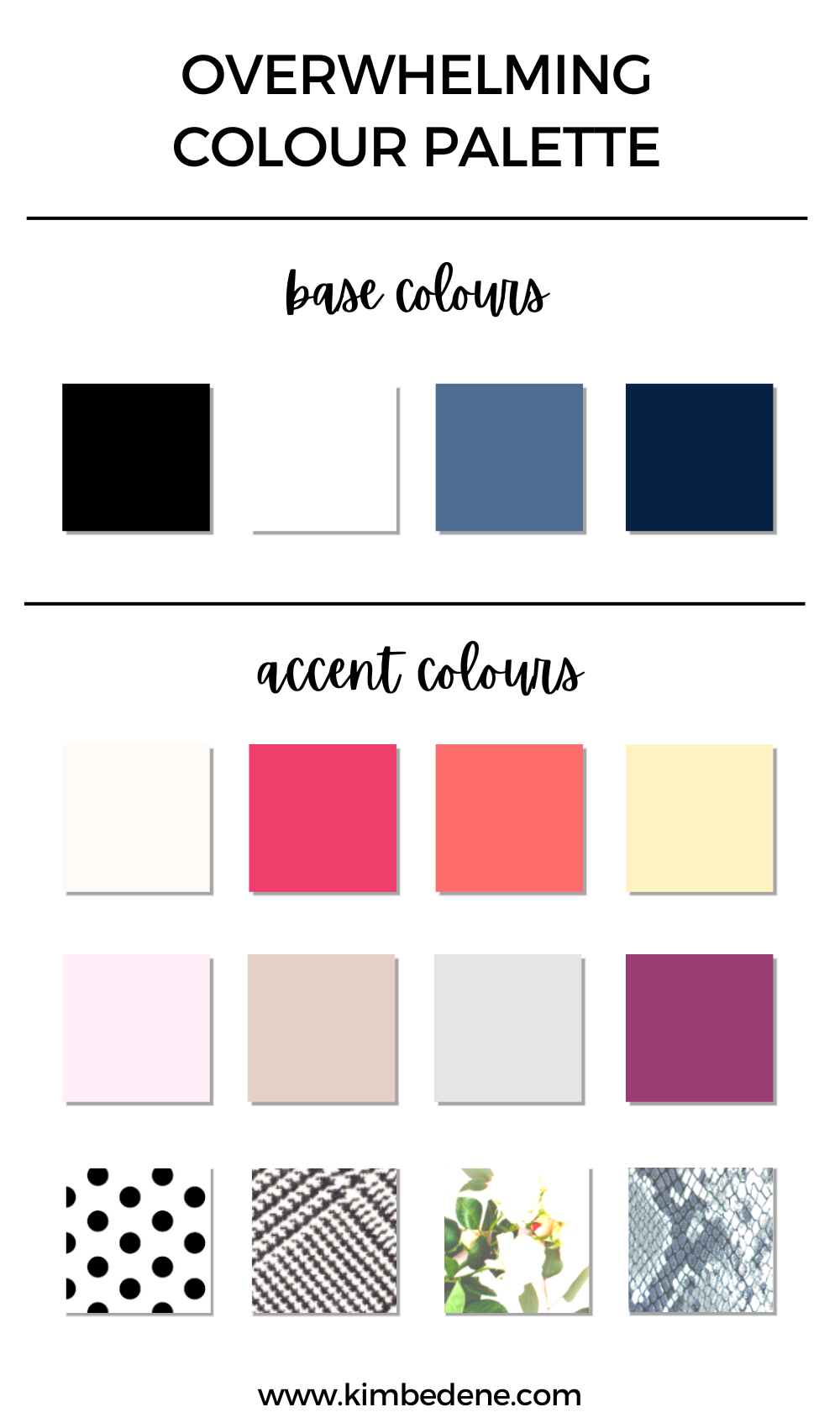
But if you’ve already done that but you still feel a bit overwhelmed, then the best next thing to do is to declutter the entire colour or pattern group. This only applies if you’re absolutely sure you won’t miss the colour or pattern because the last thing we want to do is deprive ourselves.
You can also test this out without actually decluttering anything. Simply put the colour or pattern group into storage for the entire season to see if you miss it all. If you don’t, you can then declutter it, but if you do, feel free to bring it back in.
Depending on how big your current colour palette is, you can do this for one group or even more if you think you would benefit from that. There is nothing wrong with decluttering colour or pattern groups if we’re sure about not loving them, so this is a great option to try.
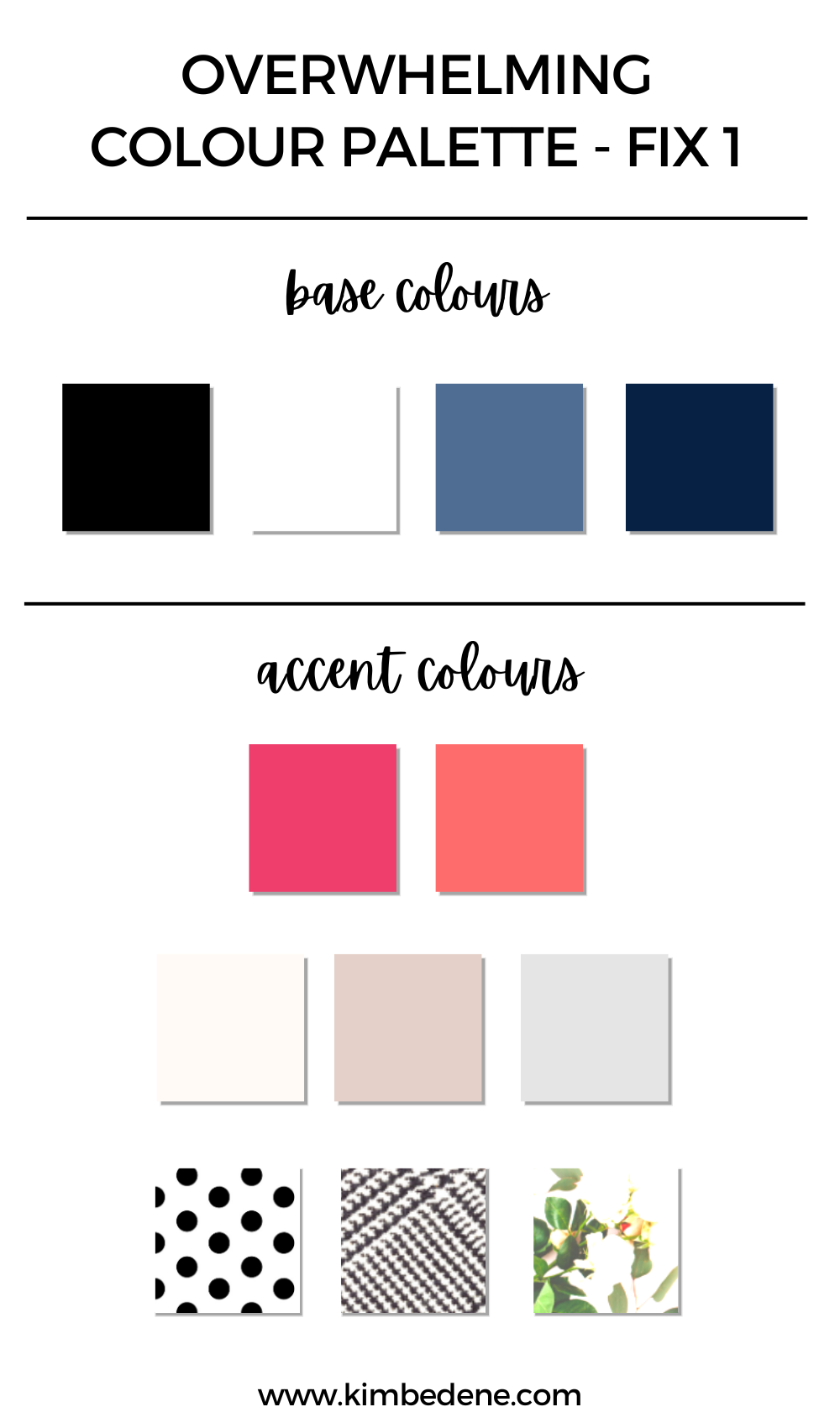
I did that with a yellow colour group. In my eyes, it was a perfect addition to the oranges, pinks and reds in my capsule, but in reality, I never really enjoyed it all that much. I love it in interior design, decor and on other people, and that’s why I subconsciously insisted on having it in my closet as well, but in the end, I realised it’s not the right fit for my complexion or my wardrobe.
I also decluttered all animal prints because I was never in love with how they looked on me. I had a pair of zebra shoes, a snake print maxi dress and a blouse, and some other leopard items. And now I don’t miss animal prints at all.
The last thing you can try here is to tweak your base, accent, and coordinating colours to make more sense to you. If you move a base colour to an accent one, this will allow you to declutter a few extra pieces instead of decluttering the entire colour group. Try tweaking colours around until you feel a bit more peaceful and grounded.
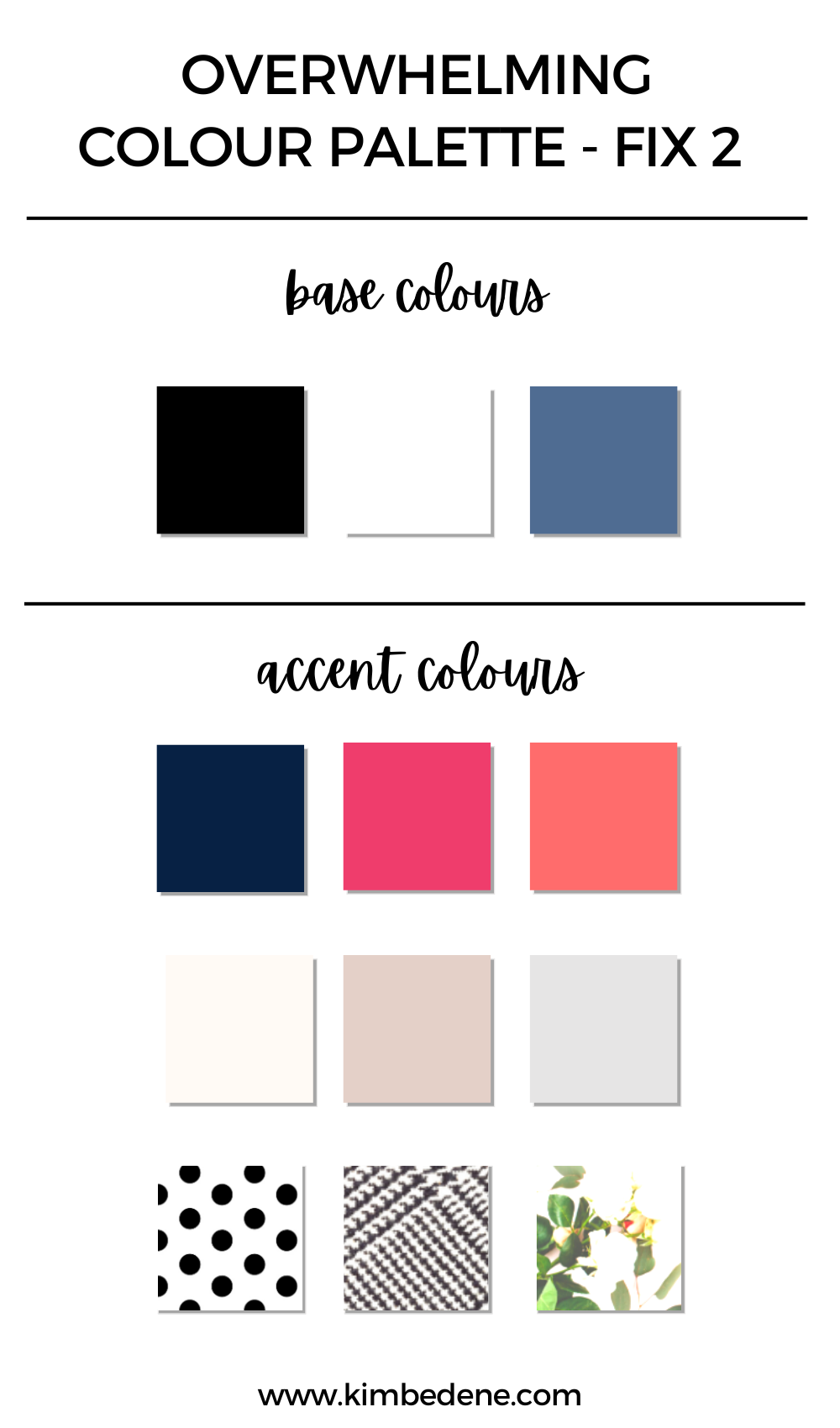
II. IF YOUR COLOURS DON’T WORK WELL TOGETHER
If you feel like your current colour palette doesn’t flow and that many of the colours don’t go well together, you can do a few things. Again, the easiest step to fix this (if you haven’t done it already) is to separate your annual wardrobe into a few different seasonal capsule wardrobes.
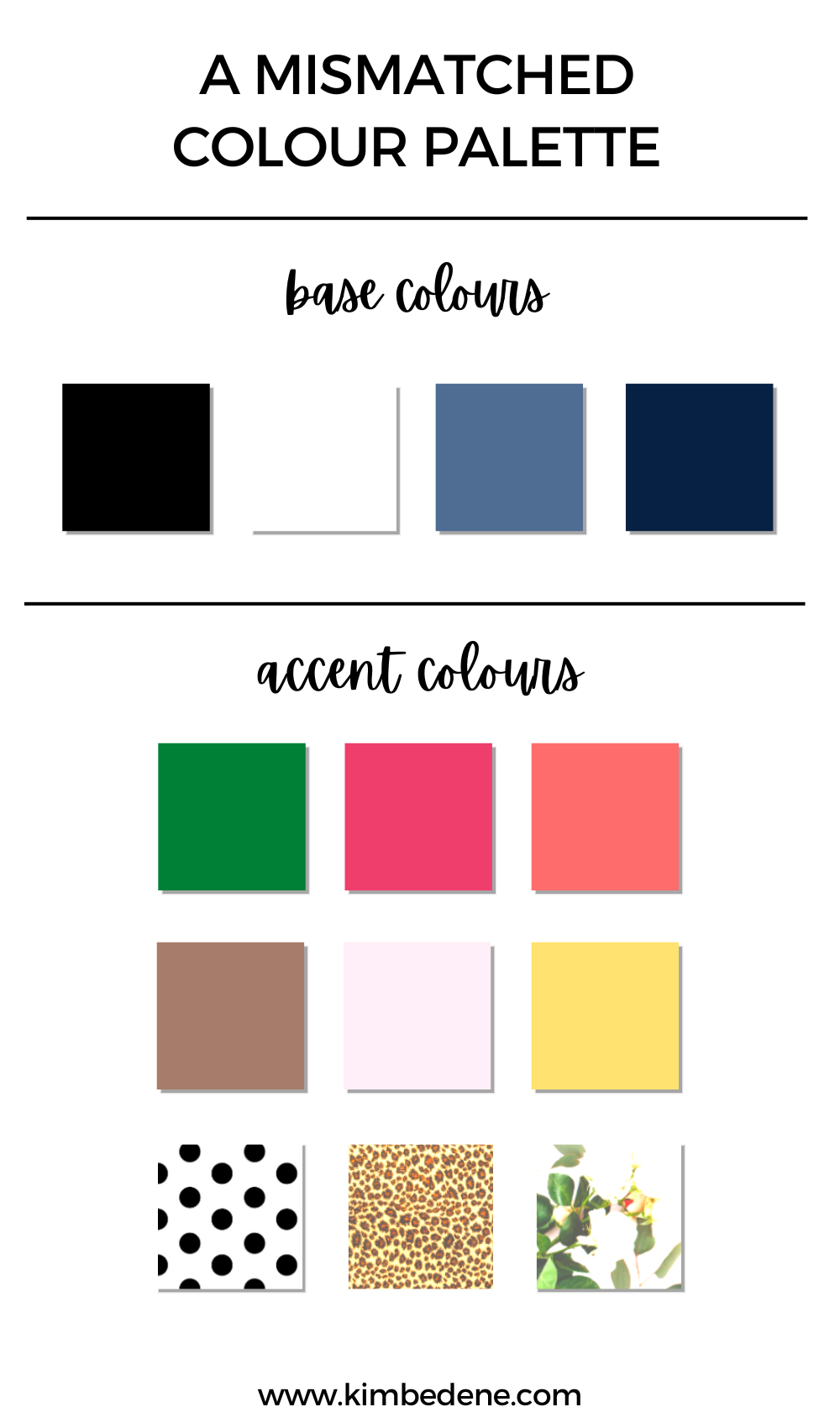
But if you’ve already done that and you still feel you don’t have the desired results, the next thing to try is to replace a colour you’re not enjoying with a neutral replacement. This can feel a bit unusual at first, but it can dramatically improve your wardrobe’s versatility. Yet if adding another neutral colour seems a bit over the top, then simply remove the colour group without a new replacement.
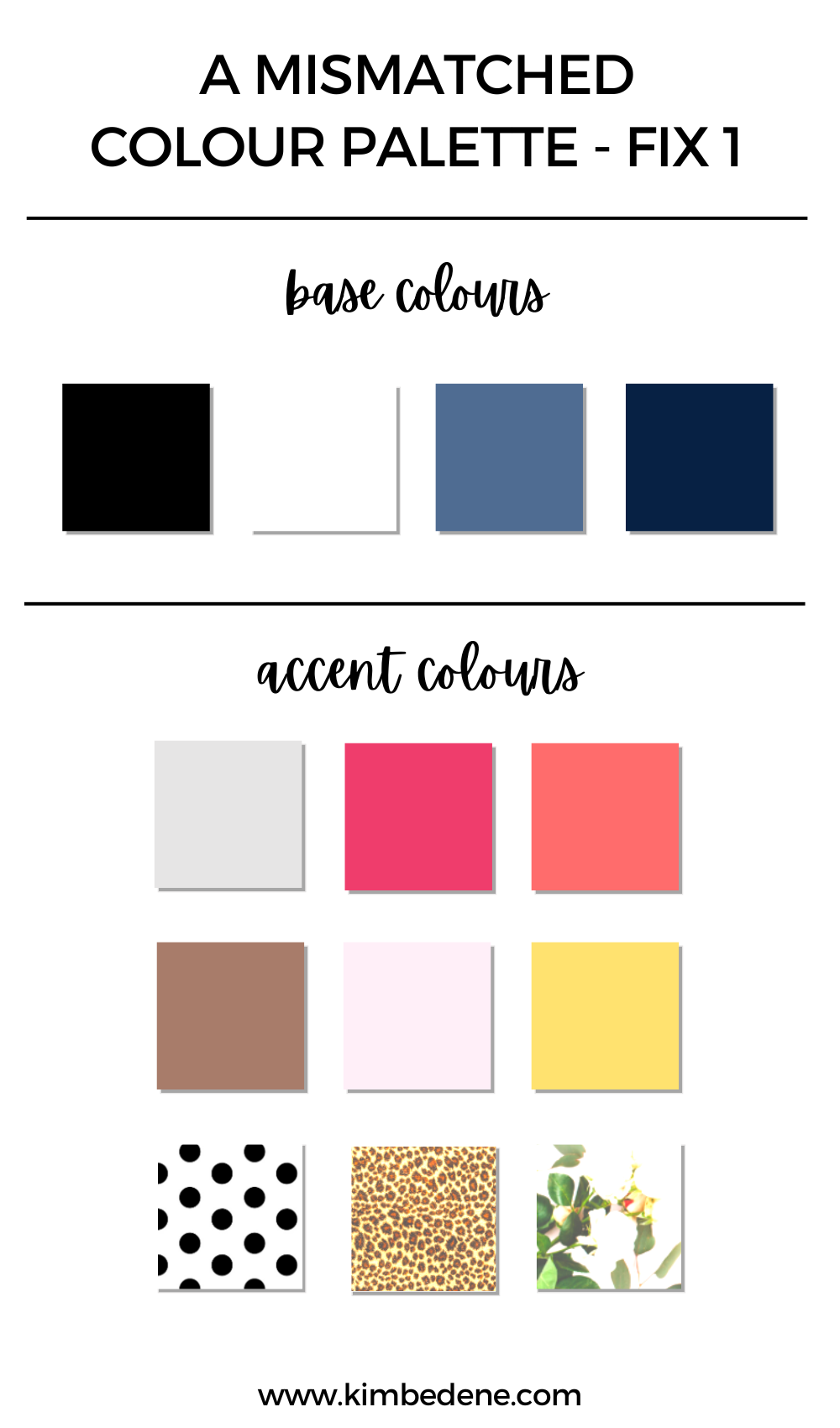
Also, a good hack you can use is to keep your desired colour group but just slightly change the shade to make it a lot more versatile. Going a bit deeper and darker or lighter and more pastel are both excellent ways of tweaking your colour group because, let’s face it, combining bright colours is a lot more complicated than combining their softer or deeper versions. But again, only try this if you think this is something you will enjoy.

Here, I also have to mention patterns because they can be challenging to combine sometimes, and they can make our closet much more confusing than it needs to be.
Most people love wearing prints with solid colours, so by knowing that, we have to make sure that most of the patterned pieces in our closet go with most of our solids. That’s exactly how I achieve a unified look; by matching my pattern with a colour that is hiding somewhere in that pattern of my choice.
So if you want to have a more versatile colour palette but you still love patterns, consider more neutral versions of that pattern: instead of bright leopard print, you can try a muted version, or instead of a green camouflage pattern, you can try a more neutral version or in a colour that is already on your palette.
Also, very easy patterns to mix and match are black and white prints or grey and black prints. So if you feel like patterns are one of your trouble areas in your wardrobe, consider the small adjustments mentioned above.
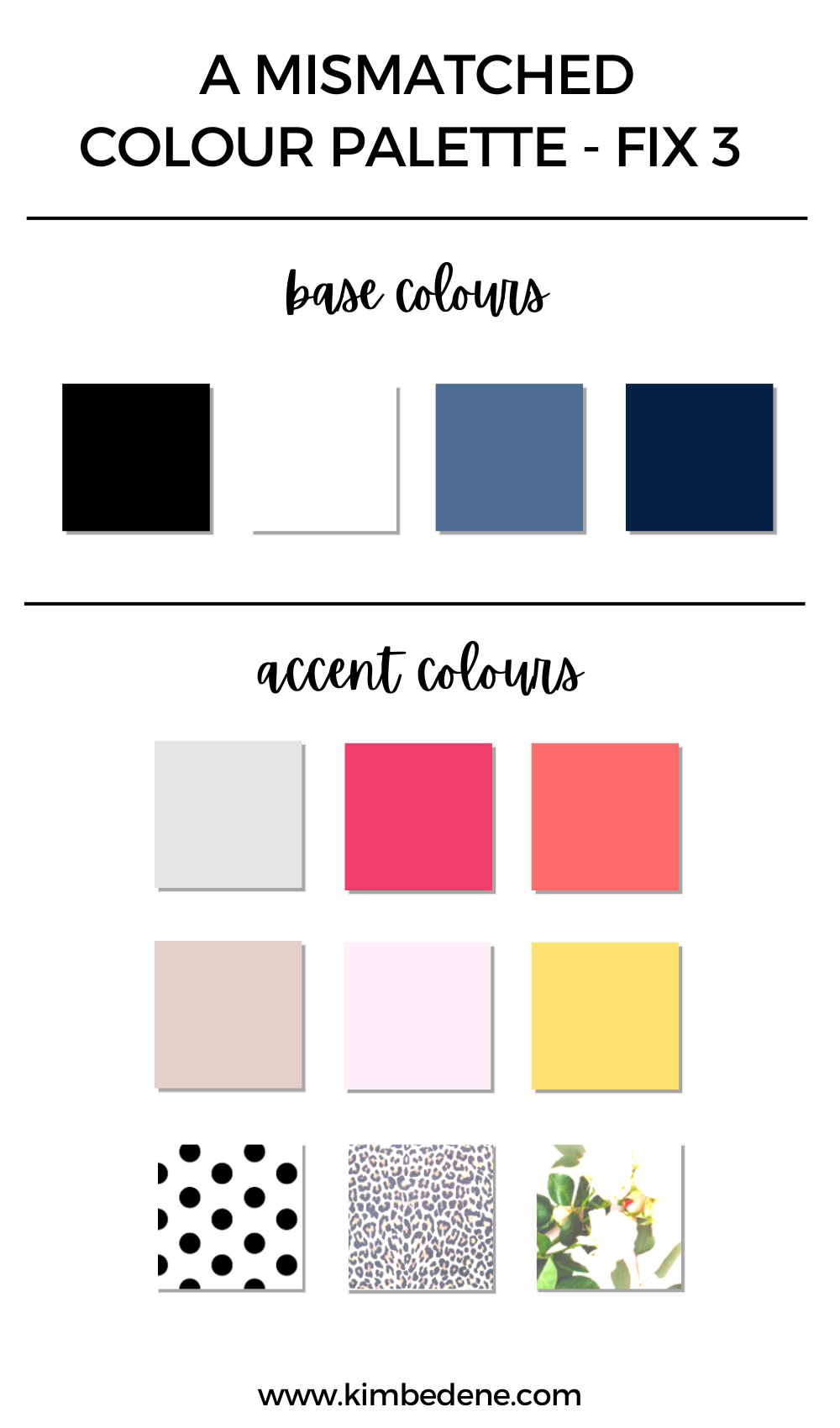
III. IF YOU FEEL LIKE YOU DON’T HAVE ENOUGH COLOUR
Now, if you’re colour palette turned out very neutral, there is absolutely nothing wrong with that. A lot of people in minimalism love neutrals because they’re so easy to mix and match.
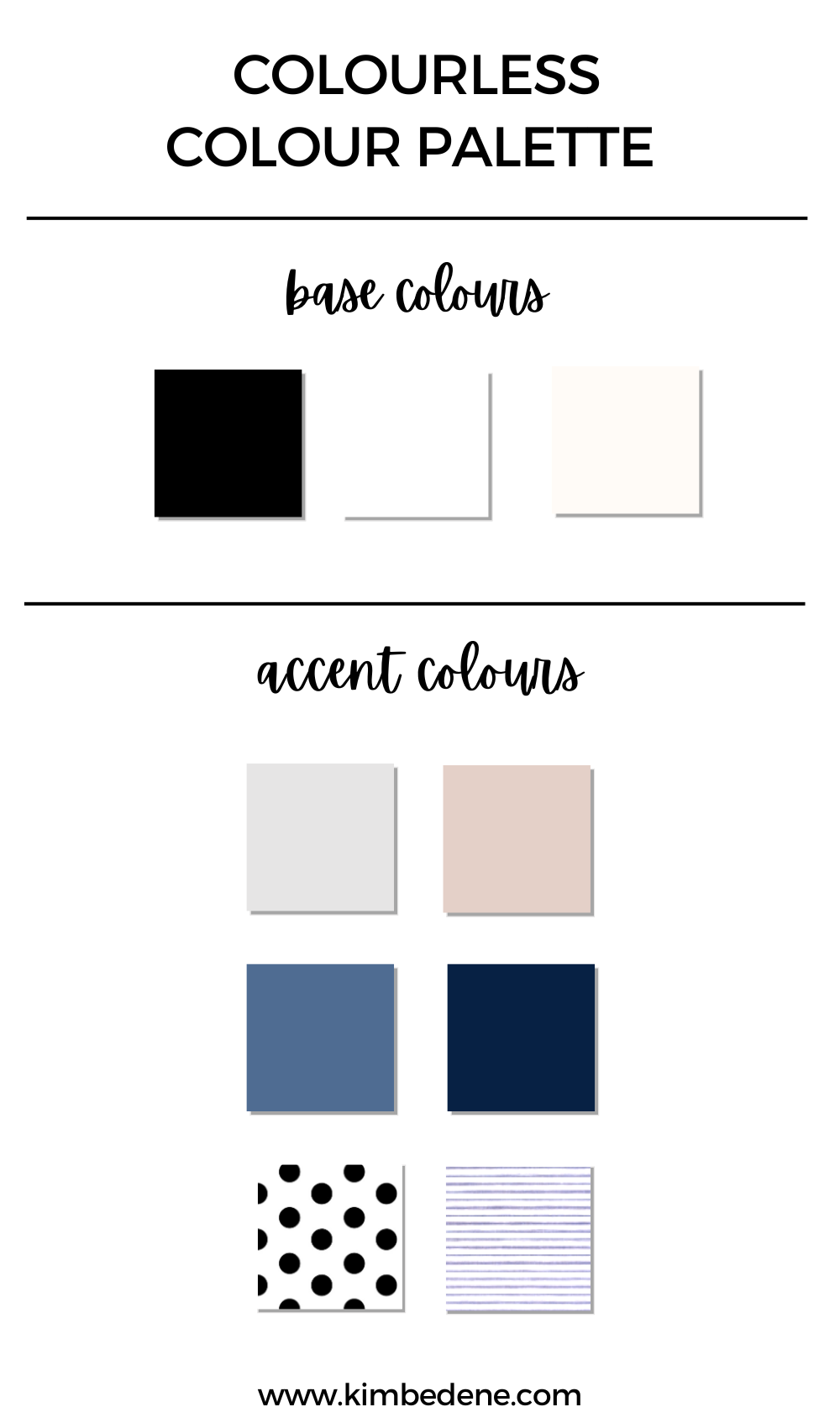
But I personally love bright colours, so I wouldn’t really enjoy a very muted and neutral colour palette. If you feel the same way, an easy fix is simply adding one or two brighter colours to your accent colours. That’s it!
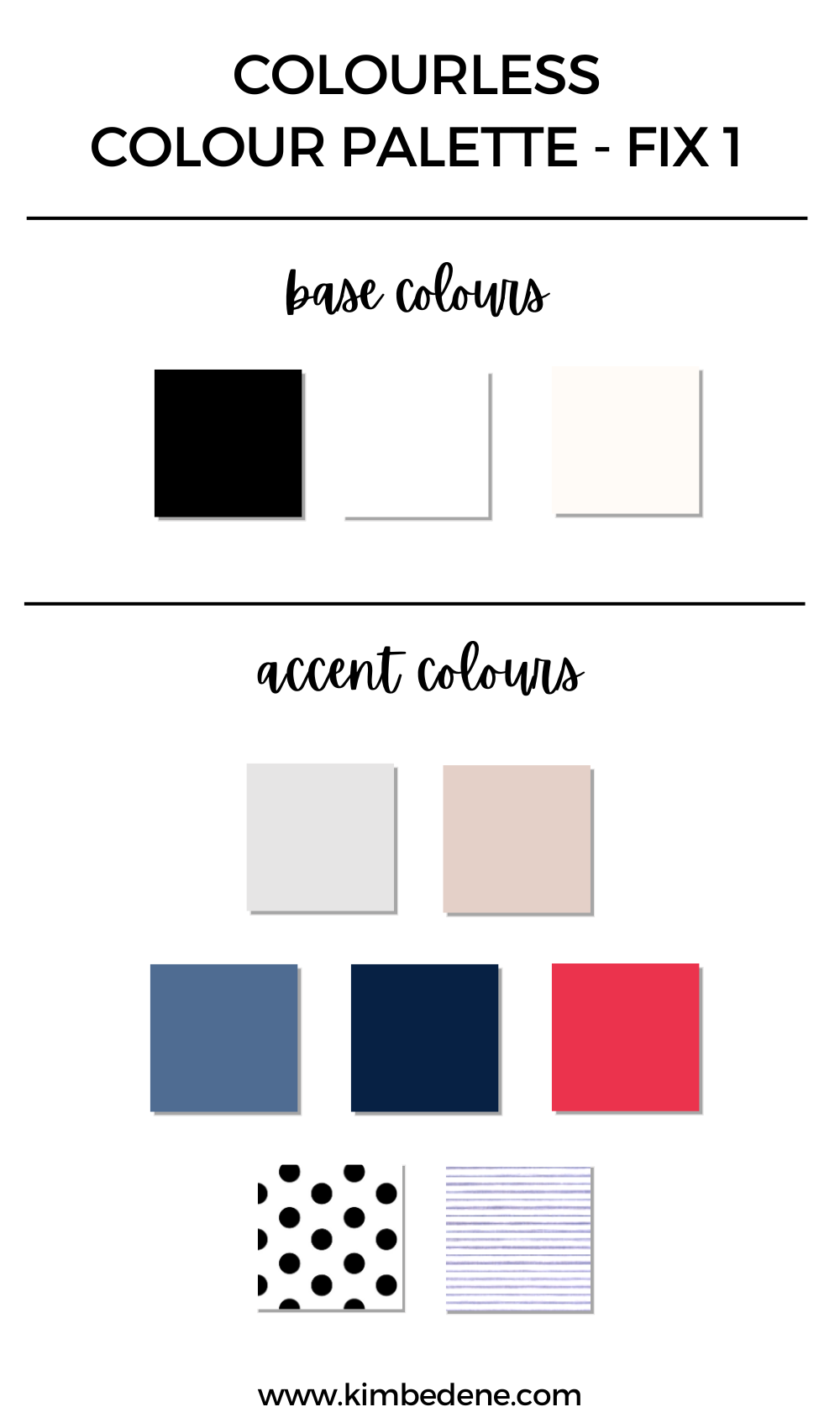
And if you don’t want to invest a lot of money into your new colour additions, then the effortless way of bringing colour to your wardrobe is with fun tops, belts, handbags, scarves, jewellery, nail polish, lipstick etc.
Also, when your closet is very neutral, you can really express yourself through the patterns and prints. They’re going to be much easier to match with muted colours, and the combinations will look pretty cool. So that’s another thing to consider.

IV. IF YOU’RE HAPPY OR UNSURE WITH YOUR PALETTE
If you’re happy with your current capsule wardrobe, then great! You don’t have to do anything, but observe how often you wear particular colours and how happy you feel with your seasonal selections to see if they’re any changes you would like to make in the future.
And funnily enough, this is the same advice I would give you if you’re not sure about your current colours. Give it some time, observe yourself and your choices, and over time, when you get more clarity, you can come back to this post and make the adjuments you feel like doing.
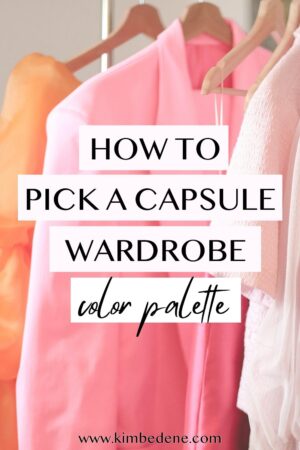
I hope this post gave you the insight to create your dream colour palette, and please remember that it’s normal that these things take time. Just keep doing your best and observe what you enjoy wearing and what you don’t, and you’ll get there 😉
If you enjoyed this post I would be super happy if you’d share it with people who would find it useful, and I wish you happy organising!

Great post. I’ve been on a capsule wardrobe journey for five years, and I still have aha moments. No doubt this article could have saved me quite a bit of time!
I’ve reduced the items in my closet from 300 to 60, and I love it. My spring-summer primary base colors are black and white; my secondary base colors are navy and stone. My accent colors are blues (from aqua to cadet blue) and pinks (from blush to rose). And I have a few prints with the same color ways. And I love scarves!
Again thank you for a very affirming guide.
Best capsule wardrobe information I’ve read to date. I can do this.
Author
I’m so happy this was helpful 🙂